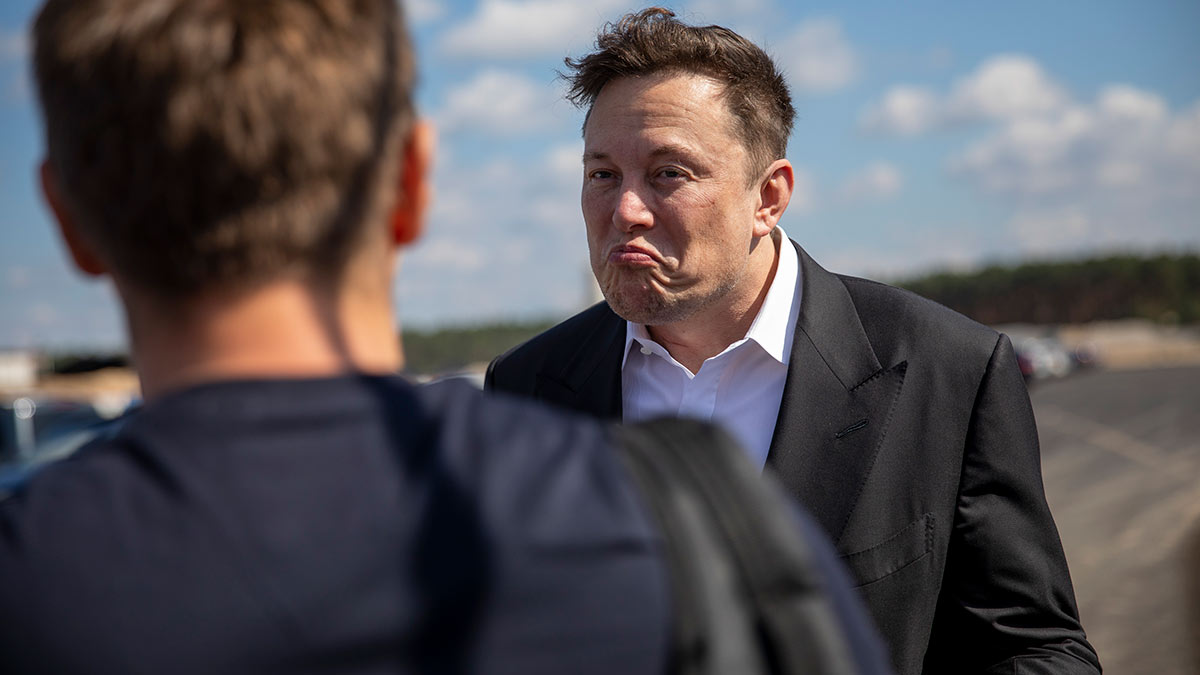‘Virtually unnoticed’: Tesla’s plan to eliminate rare earths from EVs to have minimal impact on demand, which could double by 2030

Tesla head Elon Musk arrives to to have a look at the construction site of the Tesla Gigafactory near Berlin on September 03, 2020. (Photo by Maja Hitij/Getty Images)
- Tesla said it will substitute rare earths magnets from powertrains during last week’s Investor Day presentations
- Markets reacted badly to the news, with shares in major producer Lynas (ASX:LYC) dropping ~11% Friday
- The media and market’s reaction to the news has been largely overblown: Adamas Intelligence
Tesla’s plan to remove rare earths (REEs) from future electric vehicle motors sent a shockwave through listed stocks, but the impact on future rare earths demand has been ‘overblown’, experts say.
Neodymium and praseodymium (NdPr) are two REEs used in permanent magnets for electric vehicles and wind turbines, markets expected to drive a more than doubling in demand by 2030.
In an otherwise dull set of Investor Day presentations last week, VP of Powertrain Engineering Colin Campbell said Tesla – which didn’t use REEs in some of its earlier models before the Model 3 – says the next generation will go back to being REE-free.
Tesla powertrains already use 25% less heavy rare earths (currently ~520g per car) than when they started, he said.
We’re developing a powertrain that’s more efficient & also doesn’t require any rare earths pic.twitter.com/QLbpQSf2nA
— Tesla (@Tesla) March 1, 2023
Markets reacted badly to the news. Shares in Lynas (ASX:LYC), the world’s largest ex-China REE producer, dropped some 11% when the ASX opened Friday.
“If we want to make EVs more accessible to people, they have to be cheaper,” Campbell says.
“We have reduced the drive unit cost to about US$1000, and we don’t think any other automaker is even close to that number.”
As the world transitions to clean energy the demand for rare earth is increasing dramatically, Campbell says.
According to Lynas, 7000t of NdPr oxide is needed in the manufacture of 10m EVs, and 5000t for the same number of hybrids.
Another 3000t is used in the production of 10GW of wind turbine capacity.
Both these sectors are scaling quickly, and that will lead to supply risks for automakers and other end users.
(Lynas – as the largest ex-China miner – produced ~2500t NdPr in the last half.)
“Not only is it going to be hard to meet that demand, but mining those rare earths, it has environmental and health risks,” Tesla’s Campbell says.
“We have designed out next drive unit motor to not use any rare earth materials at all.”
Impact ‘largely overblown’: Adamas Intelligence
The media and market’s reaction to the news has been largely overblown, speaking to a broad misunderstanding of the neodymium magnet (NdFeB) market’s supply and demand fundamentals, says Adamas Intelligence.
While not stated during Investor Day, Adamas says the likely candidate replacing NdFeB in Tesla’s next generation motor design is ferrite magnets.
“It’s a proven concept,” it says.
“General Motors’ second generation Voltec powertrain used in the 2016 Chevy Volt had a ferrite-driven PMSM [permanent magnet synchronous motor] alongside an NdFeB-powered PMSM.
“More recently, Proterial (formerly Hitachi Metals) unveiled its own EV motor designs using ferrite magnets.”
But these magnets have downsides.
While ferrite-powered PMSM can match or exceed the performance of an NdFeB-powered alternative across one or more parameters, this performance comes with a significant weight or efficiency penalty that has historically made the switch unattractive, Adamas says.
Even if Tesla cracks the code, the market impact will be small
The global NdFeB market stands to lose a mere 2% to 3% of demand in the near-term, and maximum 3% to 4% over the long-term (assuming Tesla maintains its EV market leadership) if Tesla commercialises this non-REE powertrain across its entire range.
“In 2022, Adamas Intelligence data indicates that passenger EV traction motors were responsible for 12% of global NdFeB magnet consumption,” it says.
“Of this 12%, Tesla was responsible for 15% to 20%, making its overall contribution to global NdFeB magnet demand (excluding micromotors, sensors and speakers) just 2% to 3%.
“Looking forward to 2035, Adamas forecasts that global demand for NdFeB magnets will triple while global production will only double, constrained by long lead times to bring online new rare earth oxide production.
“In relation to the magnitude of the expected supply gap, a 3% to 4% drop in demand by 2035 would go virtually unnoticed.”
Related Topics

UNLOCK INSIGHTS
Discover the untold stories of emerging ASX stocks.
Daily news and expert analysis, it's free to subscribe.
By proceeding, you confirm you understand that we handle personal information in accordance with our Privacy Policy.








